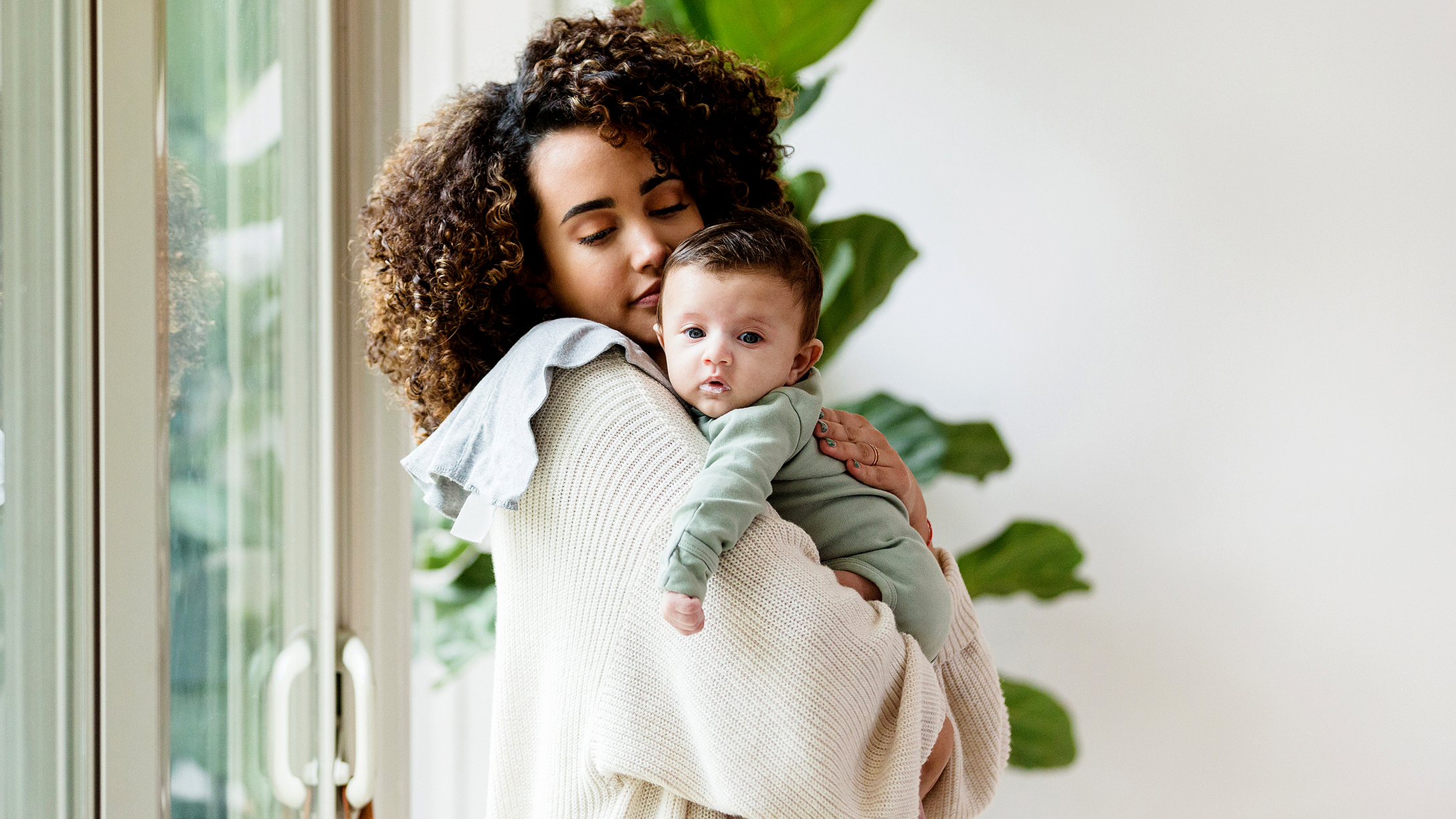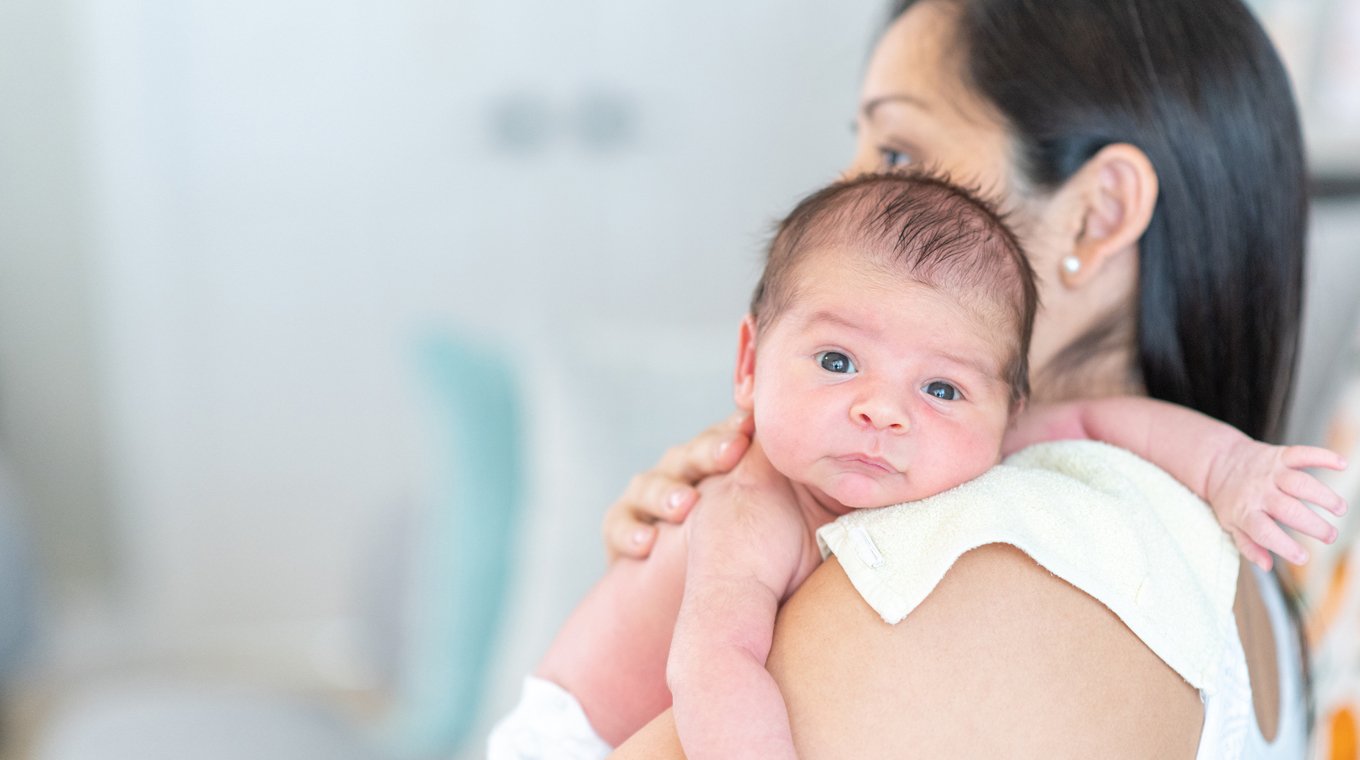
In this article
The newborn days are a glorious yet trying daze of late nights, early mornings, and every-few-hour feedings. Feeding your newborn is a beautiful bonding experience. But burping him afterward? If you know how to get him to burp, it’s no big deal. But for those of us who haven’t quite got it mastered, it can be a little frustrating.
After all, knowing how to burp a newborn should be second nature to a mom, right? In all honesty, it might not be, and that is totally OK. There are a few different ways you can burp your newborn, and sometimes even when you’ve tried everything, he still might not burp. Never fear. Today we’re going to talk about why burping your newborn is encouraged, different ways to burp the little one, and what to do if he won’t burp.
Why should you burp a newborn?

So, why is it important to burp your newborn? Well, when your baby is drinking milk or formula, with each little gulp the little one is likely taking in some air. While breastfed babies are less likely to take in as much air as bottle-fed babies, burping all babies will help get excess air and gas out of their stomachs so they can be more comfortable.
If you notice that your baby is fussy during feedings, or directly after, burping her is likely to give her relief and release excess gas. Not that burping is the only way for newborns to get gas out of their systems, but it’s usually a quicker option.
“Parents often get very worried when their child won't burp, like it's going to cause their baby's stomach to get upset or bloat," Dr. Cindy Gellner told University of Utah Health. "I promise you, your baby won't explode, and gas eventually does make it out of the GI system.”
How to burp a newborn

If you’re noticing signs of gas in your newborn, like clenched fists, arching his back, pulling his legs to their stomach or in the air, it’s time to consider burping your newborn. Every mom and baby will figure out what is most comfortable for them when it comes to burping, but there are a few common practices to get you started.
Over the shoulder
This tried-and-true method involves holding your baby comfortably on your shoulder. Use one hand to secure him at his bottom and the other to gently tap his back to release gas bubbles.
Laying on your lap
Another method you can try involves laying your baby face down on your lap. On one leg, rest his head to the side with your leg slightly raised while his stomach is laid across your other leg. Gently rub his back and give it light taps.
Sitting on your lap
Sit your baby on your lap while holding his head and chest in one hand, and then gently pat him starting at the bottom of his back. “Sitting them on my lap worked for both of my kids," Texas mom of two Erin H. told Mom.com. "And when they wouldn’t burp? It rarely happened, but if it did, we would just hold them and bounce up and down while walking around the house.”
Another variation of this burping position is better for older babies who have more neck strength. Sit your baby on your lap, facing you, and use one hand to support him in the sitting position while using your other hand to gently pat his back. Keep in mind when you’re doing any burping to pat and rub the lower and mid-back, as opposed to the top. You aren’t trying to expel anything from the lungs, you’re just trying to release those gas bubbles to keep him comfortable.
What if your newborn won’t burp?

You’ve tried everything, and yet your newborn still won’t burp. Don’t fret too much. Some babies don’t need to burp which is also OK. As mentioned before, burping your baby is to help her avoid being uncomfortable after feeding, but if your newborn won’t burp, even after you tried, they just might not need to.
On the other hand, if you notice the baby is routinely fussy, uncomfortable, or crying after feeding and aren’t burping, get in touch with your pediatrician. Different issues can arise that might be as simple as her digestion being sensitive to the nutrients coming through breast milk. Other possibilities might have to do with colic or reflux. If your baby is vomiting or has diarrhea, they may have other GI issues that require further consultation. If you’re in doubt, unsure, or just feel better with a little reassurance, get in touch with your provider.




